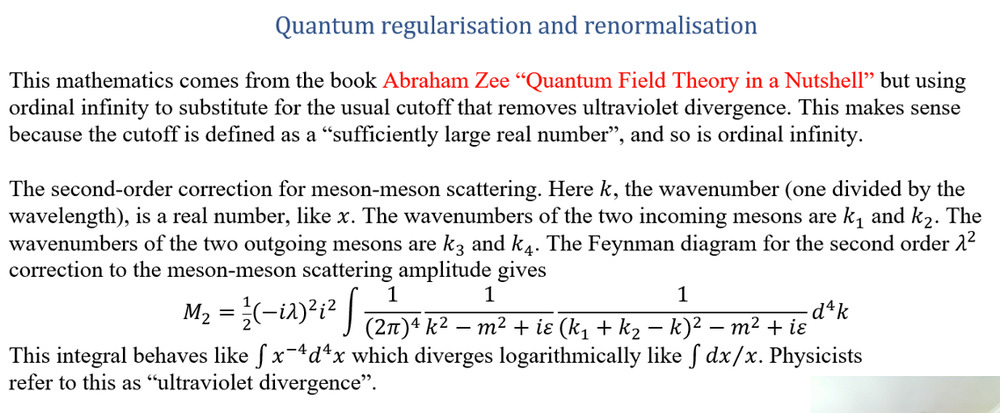(I’ve probably posted all of this before, but may as well reiterate as my opinions have shifted slightly since the olden days).
I’ve put this viewpoint on a multipart youtube. Part 1 is https://www.youtube.com/watch?v=s9OVj_XmvTY see links in the comment for the other parts. The part with least mathematics is https://www.youtube.com/watch?v=M8TwodhqRoM
In primary school we learn that ∞ = ∞+1, that ∞/∞ is undefined, and that ∞*0 is undefined. Later we learn that infinite series sometimes converge and sometimes diverge, and that -∞ is not a number. And in university learn that log(∞) sometimes exists and sometimes doesn’t exist and when it does exist then log(∞) < ∞, even though sqrt(∞) = ∞. This version of infinity was invented by Cantor who was totally mad, was championed by Peano who was half mad, and was ruthlessly promoted by Hilbert who went mad in his old age. This standard version of ∞ is useless. There is an alternative.
You may have already used nonstandard analysis without knowing it. If you write -∞ on your graph, or dy/dx for a differential, or use the order of magnitude symbol O(), then you’re already using nonstandard analysis. I’m going to use ω for infinity in nonstandard analysis to avoid confusion. Nonstandard analysis has been rigorously proved to be derivable in four different ways. From wikipedia.org/wiki/Transfer_principle, from Surreal numbers, from Hyperreal numbers, and from Hahn series. The Transfer principle can be taught in primary school and the Surreal numbers in high school.
There is already one textbook for teaching calculus using nonstandard analysis, but it’s not a particularly good textbook.
The Transfer principle is “If something is true for all sufficiently large x then it is taken to be true for infinity ω”. Because x-1 < x < x+1 so ω-1 < ω < ω, and ω/ω = 1, and ω*0 = 0, and –ω is a number. Infinitesimals such as dy and dx exist. And, with the correct definition of limit, infinite series always converge. Infinity finally makes sense, and having ω/ω = 1 allows us to use renormalisation in quantum mechanics without the need for an ultraviolet cut-off.
Many mathematicians foam at the mouth if I suggest any of these. There is a well-known proof that ω is the smallest infinite number contradicting ω-1 < ω. When examined in detail, this proof turns out to be a tautology – you can prove that ω is the smallest infinite number if and only if you assume that ω is the smallest infinite number. Cantor published three proofs that infinitesimals can’t exist, all three proofs have since been demolished. The famous “Hilbert’s hotel” has multiple alternative interpretations. https://www.youtube.com/watch?v=Rziki9WEdRE
Many famous mathematicians have contributed to the theory of nonstandard analysis, including Newton, Leibniz, Cauchy, Laurent, Levi-Civita, the young Hilbert (before he went mad), (Rumanajan’s) Hardy, Borel, John Horton Conway, and many other mathematicians who are less well known.
Throw standard analysis in the waste bin and teach nonstandard analysis in school instead. By the way, standard analysis can be recovered from nonstandard analysis using an equivalence class.



